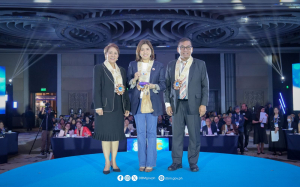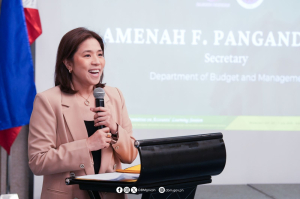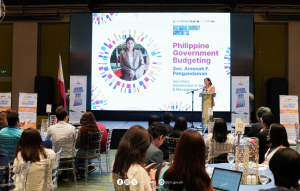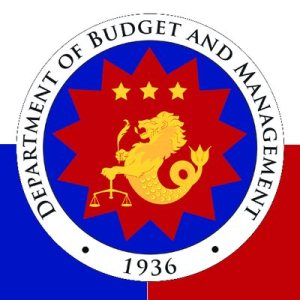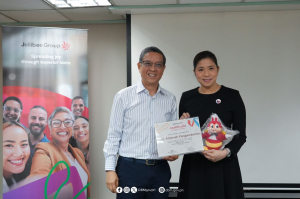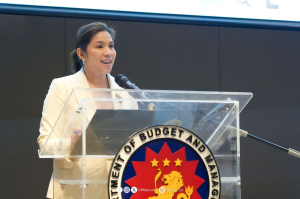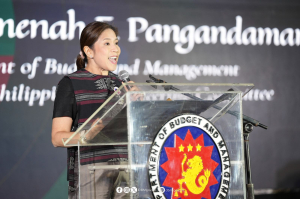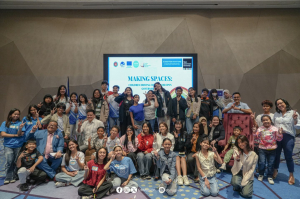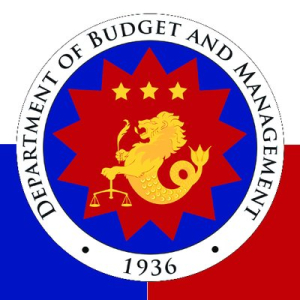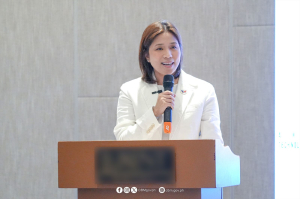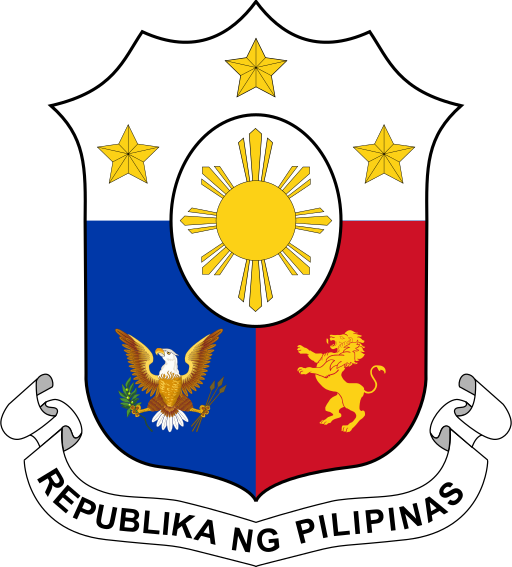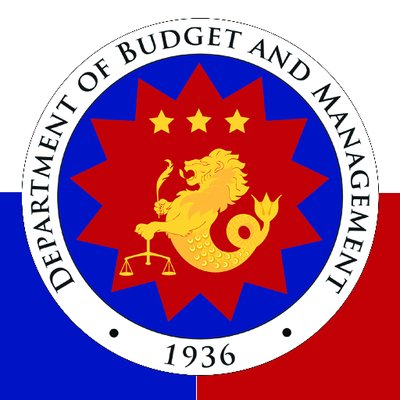
- Details
Good day to all the members of the Philippine Institute of Certified Public Accountants (PICPA) Foundation Inc.
First, I would like to congratulate all of you for having so much to celebrate at your 77th Annual National Convention. I am privileged to be given this opportunity to share with almost 4,500 Certified Public Accountants (CPAs) an affirmation of your service, excellence, and indispensable impact on the lives of Filipinos.
I believe that the theme, “Play it Forward: Securing a Sustainable Future,” sums up what you, our dear CPAs, have been doing for the country. By ensuring financial balances, successful registrations and compliance with laws, and payment of taxes, among others, you see to it that our institutions continue to operate and grow. These include our schools, hospitals, government offices, corporations, and small enterprises.
These places are imperative in creating our sense of community. They play a huge role in fulfilling our dreams. They become witnesses of our hard work and dedication to build decent lives. And your presence and diligence in ensuring the integrity and stability of these institutions translate to better living conditions for us.
With your meaningful insights that benefit not just the government and private executives but also the workers, consumers, and the general public, you have contributed to the large-scale growth of the country. Just recently, we welcomed the good news of the country’s high-growth performance of 7.6 percent GDP growth in the third quarter of 2022.
Our economy has been recovering and we thank you for doing your part and helping us get to where we are now. I hope that you will join us as we aim to achieve our goals for the country.
On our end at the Department of Budget and Management, we commit to ensuring the prudent and judicial management of government resources by funding and prioritizing the programs, activities, and projects that will benefit all Filipinos. Through this, we hope to help realize the sustainable future that all of you have been envisioning for the country.
In line with this, we have prioritized in the Fiscal Year 2023 Proposed National Budget the enhancement of our bureaucratic efficiency. We believe that structural reforms in the government are crucial in strengthening the individual efforts that every worker does, including you, our honorable accountants.
We pursued investments in information and communications technology in order to transform and digitalize government processes, records, and databases through e-governance. Php 12.47 billion of the national budget was proposed for our ICT and digitalization programs and projects. The Department of Finance and its attached agencies including the Bureau of Internal Revenue and Bureau of Customs will receive Php 3.56 billion for their digital transformation programs.
At the department level, we will fast-track the development and implementation of the Budget and Treasury Management System or BTMS so we can record real-time information on financial transactions across government agencies from purchase to payment. This will be facilitated by the Progressive Budgeting for Better and Modernized Governance or the PBBM Governance Bill which we will forward to Congress for approval and enactment.
As I reiterated a while ago, schools and hospitals, among other institutions, shape our lives. Your expertise and service have been guarding these institutions. Your analysis, advice, and interpretations help leaders and managers make informed decisions. Your role in our public financial management system contributes to building our nation.
As you continue to grow in your field, adapt to changes, and rise above unforeseen challenges, we hope you can be our partners in our Agenda for Prosperity, our partners in achieving our vision of economic transformation that is inclusive and sustainable, that will benefit not only all Filipinos today but also future generations.
Maraming salamat at mabuhay! Assalam Alaikum.

- Details

To Zamboanga City Mayor John Dalipe; Zamboanga Sibugay Provincial Budget Officer and President of the Mindanao League of Local Budget Officers (MLLBO) Inc. Rosana Palalon; MLLBO Officers and Board of Directors;
To my colleagues from DBM who are also joining us in today’s event;
To DBM Regional Office IX Director Mark Louie C. Martin and Regional Office X Director Rudylia C. Parrel, and employees from DBM Regional Offices;
To all our local budget officers, public financial managers, and participants from Mindanao LGUs, magandang araw po sa ating lahat. Buenas tardes! I was told that there was a number of Maranaos here, sa mga kababayan ko, [Greetings in Chavacano]
As a proud daughter of this beautiful land, I am honored to deliver this keynote speech before you, my fellow Mindanaoans, especially as the theme of this event is very dear to me.
Since the beginning of my term as Secretary, the institutionalization of budget reforms and digitalization of our public financial management or PFM have always been my top priorities. In the same manner, enhancing bureaucratic efficiency and sound fiscal management is highlighted in our 8-point Socioeconomic Agenda. While these priority areas were also part of the development and governance objectives in the previous years, I am positive that with the enthusiastic leadership of President Ferdinand R. Marcos Jr., together with your ardent support, these priorities will finally come to fruition.
Just this month, we welcomed the good news that our GDP has grown to 7.6 percent for the third quarter of 2022—a triumph worth celebrating as we recover from the effects of the COVID-19 pandemic. Apart from the increase in mobility and opening of the economy due to the ease of travel restrictions, this positive economic outlook is attributed to good tax performance. We hope to sustain this growth, if not surpass it, and we believe that enhancing our digital governance will play a crucial role in achieving this.
By investing in digital infrastructure, the government can improve its revenue collection, and ultimately promote efficiency, transparency, and accountability in the use of our public funds. We want the people to know how we actually spend their hard-earned money and strengthen their trust in the process.
As a testament to our commitment to ensuring a clean and efficient bureaucracy, we have allocated some Php 12.47 billion in the 2023 Proposed National Budget for the digitalization of government services.
To accelerate the transition to digital governance, we have set aside:
- Php 4.7 billion for the ICT Systems and Infostructure Development, Management, and Advisory Program which covers:
- Php 1.7 billion for the National Government Data Center Infrastructure;
- Php 1.5 billion for the National Broadband Plan; and
- Php 169 million for the National Government Portal;
- Some Php 2.6 billion for Revenue Information Systems Development and Infrastructure Support; and
- Php 1.2 billion for the Philippine Customs Modernization Project
President Marcos Jr. has also called for the swift passage of the consolidated bill on the E-Government and E-Governance Acts, which will serve as the country’s framework in digitalizing the economy and our government services. This legislation will pave the way for an integrated, interconnected, and interoperable information, resource sharing, and communications network within and among government agencies for a more efficient and transparent public service delivery.
On our end at DBM, we will fast-track the implementation of the Budget and Treasury Management System or BTMS together with the Department of Finance, and the Bureau of the Treasury, and the Commission on Audit. This is a crucial digitalization initiative to enable real-time mapping of transactions, allow accurate financial reporting and management, and enhance oversight control. Its key objective is to achieve the future state of PFM where all spending agencies would capture government transactions at source using the BTMS as the sole accounting and fiscal reporting system.
Lastly, we will ensure the smooth roll out of the recently released Implementing Rules and Regulations of Executive Order No. 170 which mandates the adoption of digital payments for government disbursements and collections in the national level as well as in the local government units. This EO also aims to facilitate the fast distribution of financial aid to beneficiaries, ultimately promoting financial inclusion—an advocacy I have been pushing for even when I was still with the Bangko Sentral ng Pilipinas.
For all these to become a reality and a success, we need your unwavering support and enthusiastic participation in the local government, as good governance is and should be collaborative. I encourage our participants here today to be our frontrunners in promoting good governance and sound public financial management, not only in Mindanao, but also in the country.
Let us work together in implementing budget reforms towards the realization of our mission to ensure the equitable, prudent, transparent, and accountable use of public funds.
Asahan po ninyong kaagapay ninyo ang DBM sa pagkamit ng gobyernong malinis, tapat, at tunay na tumutugon sa pangangailangan ng bawat Pilipino.
Maraming salamat po. Assalamu alaikum!
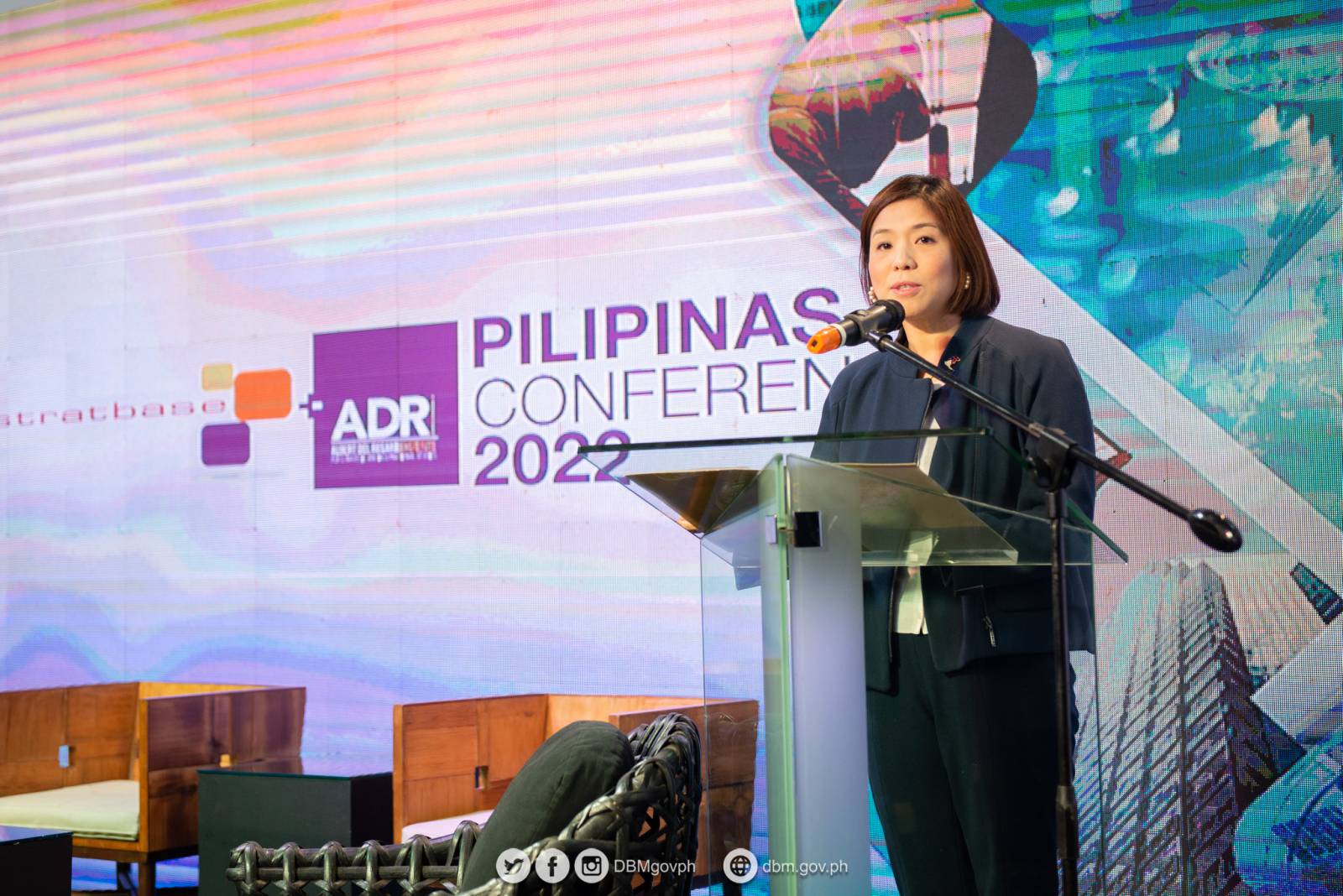
- Details

Officers and members of the Stratbase ADR Institute, panelists, special guests, and all the participants of the Pilipinas Conference 2022, a pleasant morning to all of you.
On the 7th staging of the Pilipinas Conference this year, Stratbase ADR Institute and Democracy Watch Philippines is taking on an important topic critical to our post-pandemic recovery—Digitalization. This is crucial as greater collaboration and innovation on public service delivery is even more pronounced now as the public demands for a more responsive government—quick to deliver as we cushion the unprecedented impacts of the pandemic.
In 2022, our ranking in the IMD World Digital Competitiveness improved two places higher from 58th to 56th out of 63 countries. However, we remain behind compared to our peers in the Asia-Pacific with a score of 52.81 out of 100. This dictates the need for our country to fully embrace and transition to digitalization, especially on government processes and business models.[1]
But how exactly do we optimize digitalization to effectively execute the principles of good governance; strengthen policy-making and service delivery; and achieve socio-economic goals?
Allow me to share with you our three strategic priorities to address the existing gaps on open and inclusive governance by leveraging on digital interventions:
First, by Energizing Citizen Participation in Governance.
Our efforts to energize citizen participation in governance has paid off, evident with our improved score in public participation in the Open Budget Survey. In 2019, we scored 31 out of a hundred. In 2021, it increased to 35 out of a hundred, making us number one in Southeast Asia. Note that the global average for public participation is at 14 points.
We intend to further energize this through our efforts in the DBM and in the Philippine Open Government Partnership.
In particular, the DBM is in the process of establishing a CSO Desk to serve as the focal unit for all concerns related to public participation in the budget process, among others. The DBM CSO Desk will be one of the avenues in providing capacity-building activities for CSOs to enable a more meaningful engagement. We target to roll this out by year-end.
I am also glad to share with you that we are in the process of crafting the 6th National Action Plan under the Philippine Open Government Partnership (PH-OGP) initiative. Central to the development of the plan is to amplify collaboration between the non-government sector and the government agencies in the design, implementation, and monitoring of government programs.
Hence, the PH-OGP will also focus on harnessing technologies that will help build the capacity of CSOs to properly monitor and evaluate national commitments.
Some of our PH-OGP success stories on opening spaces for citizen participation in the recently concluded action plan includes the introduction of e-Participation tools through DICT’s National Government Portal.
We have also engaged and empowered citizens via the 8888 Citizens Complaint Center.
DSWD’s Disaster Response Operations Monitoring and Information Virtual Operating Center also improved our mechanisms for immediate and effective disaster response.
In addition, the Citizen Participatory Audit (CPA) has been institutionalized to enable citizens to participate in the audit process as accountability partners of the government.
Second, Investing in Innovations to Close the Digital Governance Gap.
The 8-point Socioeconomic Agenda underscores our direction to achieve efficiency across the government and enhance the country's digital economy. To enable this, we should invest in digitalization and innovation now.
In our ever-evolving digital society, we acknowledge that inclusivity remains to be a challenge. To achieve equitable participation in the digital society and bridge the widening digital divide, the government must make meaningful digital opportunities available for all—beyond basic connectivity.[2]
Our President Ferdinand R. Marcos Jr. himself highlighted in his first State of the Nation Address (SONA) the need to optimize technological innovations to improve public service delivery coupled by enhancing universal connectivity. The use of technologies by the government enables the development of people-centric and demand-driven policies.
By investing in digitalization, we connect Filipinos to more opportunities. That is why in our proposed FY 2023 budget, Php 12.47 billion will be provided for ICT and digitalization programs and projects of the government.
Of that total, we have allocated Php 4.72 billion for the ICT Systems and Infostructure Development, Management, and Advisory Program of the Department of Information and Communications Technology (DICT) that shall connect government departments and improve its accessibility, and improve overall internet speed and affordability, while another Php 2.06 billion for the Philippine Identification System (PhilSys) shall support the accurate and timely provision of social services.
In addition, the Php 3.56 billion budget for DOF and its attached agencies including BIR and BOC also highlights the focus of our digitalization efforts towards the improvement of revenue collection.
Third, Harnessing an Agile Government.
To improve bureaucratic efficiency, the DBM advocates digitalization throughout the Public Financial Management process.
Together with the Department of Finance, Bureau of the Treasury, and Commission on Audit, we shall fast track the roll-out of the Budget and Treasury Management System or BTMS. This will improve our data governance by generating real-time, accurate and vital financial information which will aid government managers to make timely and data-driven decisions.
This will result in better cash management, effective financial control, accountability, and oversight with financial management systems integration across the bureaucracy.
I am also delighted to share with you that we are embarking on digital transformation for the government's procurement process to enable a more efficient and transparent public procurement.
All these initiatives redound to making our public financial management system work for the people by strengthening the integrity of our systems, diminishing human discretion in government transactions, and strengthening inter-agency coordination.
We will also work with Congress towards the enactment of the PBBM Governance Bill—we just coined the term yesterday—which shall facilitate the development and implementation of the Integrated Financial Management Information System and the gradual implementation of the Cash Budgeting System or CBS.
Our main consideration across these strategic priorities is to leverage on digital transformation to achieve open, inclusive, and sustainable governance.
While we recognize that it is a challenging road ahead, we are also leveraging on the strong partnership we have with the CSOs and the private sector in this pursuit.
To this end, we shall deliver effective and efficient public services; provide spaces to listen and to respond to the issues we face; and put the interest and welfare of the Filipino people at the center of its governance.
We invite you on this journey as we collaborate for an innovative, open, and inclusive government.
Mabuhay po tayong lahat! Assalamu alaikum.
[1]https://www.dbm.gov.ph/index.
[2] United Nations e-Governance Survey
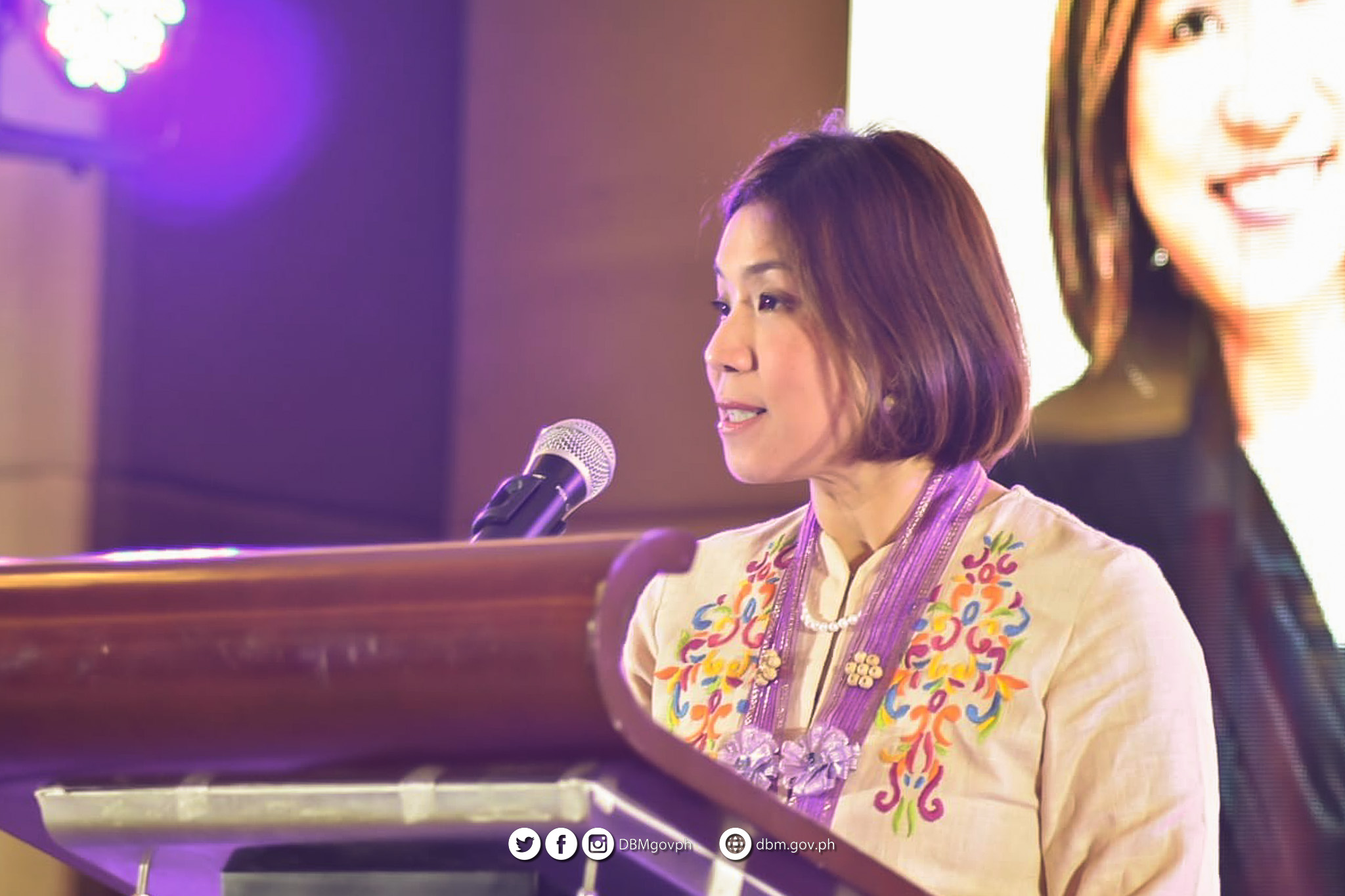
- Details

DBM Regional Directors—Dir. Lenin Bernales of Regional Office VI; Dir. Maria Liane Gayomali of Regional Office VII; and Dir. Imelda Laceras of Regional Office VIII;
Philippine League of Local Budget Officers (PHILLBO) Visayas Inc. President and Municipal Budget Officer of Dauis, Bohol, Mr. Samuel Penales;
PHILLBO Inc. President and Capiz Provincial Budget Officer Mr. G. Antonio Arbis;
Officers and members of PHILLBO Inc.; the Association of Local Budget Officers (ALBO) VI, Inc.; the Association of Local Budget Officers in Central Visayas (ALBOCV) Inc.; and Region VIII Association of Local Budget Officers (REALBO) Inc.;
Resource speakers; local budget officers, public financial managers, guests, and participants;
Thank you for inviting me today and congratulations on the success of the PHILLBO Visayas Area Conference!
The theme of this event, “Local Budget Officers: Transformational Leaders for a More Inclusive and Sustainable Public Financial Management” is aligned with the theme of our Proposed National Budget for 2023—”Agenda for Prosperity: Economic Transformation Towards Inclusivity and Sustainability.”
As the Administration’s first national budget moves closer to approval, we are also moving forward in addressing the immediate issues confronting the Filipino people through the national budget. This is encapsulated under our 8-Point Socioeconomic Agenda and anchored on these pillars:
- Strengthening the purchasing power of Filipinos;
- Reducing vulnerability and mitigating scarring from the COVID-19 pandemic;
- Ensuring sound macroeconomic fundamentals; and finally,
- Supporting local governments.
As I’ve mentioned in the 25th Annual Convention Seminar of PHILLBO Inc., our economic transformation agenda will not be truly inclusive without our local governments.
In the same manner, our pursuit of bureaucratic efficiency and sound fiscal management would be impossible without our local budget officers and public financial managers who all play a crucial role in ushering LGUs toward a more open, sound, and strong PFM.
So thank you, PHILLBO Visayas, for collaborating with the Department of Budget and Management and remaining steadfast in your commitment to capacitate and equip our local budget officers not only with technical knowledge on local budgeting processes, but also with regional vision sharing, collaboration techniques, growth mindset, and of course, transformational leadership competencies.
Rest assured that the DBM is always ready to assist you, especially as we move towards full devolution which will be discussed in this conference by Dir. John Aries Macaspac from our Systems and Productivity Improvement Bureau.
To facilitate this transition, our proposed budget next year provides allocations to empower LGUs in delivering the services that have been devolved to them including the Php 28.9 billion Local Government Support Fund (LGSF), on top of the Php 820.3 billion indicative just share of the LGUs from the 2023 national tax collections.
In addition to full devolution, the government has introduced a range of budget process reforms aimed at strengthening public financial management and as part of our commitment to instill fiscal discipline or spending within our means; allocative efficiency or spending on the right priorities; operational efficiency or spending with value-for-money; and spending with transparency and participation.
And our gathering today reflects these commitments and entails empowering citizens, communities, LGUs, and other stakeholders through greater transparency, accountability, and participation in the PFM process.
Among our priority budget reforms are the:
- Cash Budgeting System (CBS) which aims to promote fiscal discipline and improved operational planning and execution of government programs, activities, and projects (PAPs); and the
- Budget and Treasury Management System (BTMS) which will facilitate the generation of vital information and real-time tracking of government financial transactions.
Meanwhile, another reform that I would like to highlight is aimed at inculcating transparency and public participation—the Philippine Open Government Partnership or PH OGP. This provides an avenue for genuine citizen participation in government processes and a platform for collaboration between champions and movers in government alongside active non-government actors.
For the past 10 years, we have worked hard towards energizing civic space, opening up public institutions, and strengthening digital governance.
As Chair of the PH-OGP Steering Committee, the DBM is committed to continuing the work towards an Open Government in the next decade and beyond.
Given these, I would like to emphasize the importance of institutionalizing PFM in meeting our socioeconomic development objectives under our MTFF or Medium-Term Fiscal Framework which aims to achieve:
- —we are on track given the 7.6 % real GDP growth in the third quarter of this year
- 9% or single digit poverty rate by 2028
- 3% National Government deficit to GDP ratio by 2028; and
- less than 60% National Government debt-to-GDP ratio by
These headline goals may sound like a very tall order, but if we all work together guided by our mandate to ensure the equitable, prudent, transparent, and accountable allocation and use of public funds, we can move closer and closer to achieving our Agenda for Prosperity that will be felt by every individual, family, and entity in the country.
Thankfully, we have our public financial managers including our local budget officers who are not just transactional practitioners. You are all transformational leaders that embody the PFM core values of accountability, transparency, integrity, and fiscal responsibility. As such, you are our trusted agents in the realization of our vision of economic transformation that is inclusive to all Filipinos and is sustainable for future generations.
Thank you again and congratulations!
Assalamu Alaikum.

- Details
Magandang hapon po sa lahat ng nakikilahok sa ating regional Dagyaw dito sa National Capital Region. To Regional Director Maria Lourdes Agustin of the Department of Interior and Local Government, our esteemed resource speakers, representatives from local government units, and participants from civil society organizations, thank you for the privilege to share with you my message today on social accountability.
These two words are reflected in the theme of this town hall meeting, "Likas-Kaya: Kalinga, Kaligtasan at Katatagan sa Pandemya" or “Fostering Multi-Sectoral Convergence through Social Accountability.”
Allow me to quote the great Martin Luther King, Jr. He said: “an individual has not started living until he can rise above the narrow confines of his individualistic concerns to the broader concerns of all humanity.”
This, I think, is what social accountability is all about. It says, “I have personal predicaments, but it should not make me lose sight of the people around me.”
And social accountability is not only about what one says but also about what one does. We don’t stop at awareness and recognition. We step in and do something. We participate in donation drives following the onslaught of typhoons and disasters; we join health and volunteer missions amid the pandemic; and we gather and discuss ways forward like what we are doing today, here in Dagyaw.
It is only when we embody social accountability that care, safety, and resilience become realized. And it is only through Dagyaw—or togetherness—that we can achieve these. When we recognize how interconnected our lives are with other people’s lives, it becomes easier for us to empathize, care, and do better.
As part of the government, it is our job to create the environment that would help people rise above their personal concerns.
We want to foster social accountability by providing proper support for our citizens, especially to the most vulnerable sectors.
On our end at the Department of Budget and Management, we have worked hard to make sure that the 2023 Proposed National Budget prioritizes the immediate needs and pressing concerns of Filipinos including transportation, education, health, and disaster readiness—the core theme of this year’s Dagyaw.
Thus, we have allocated the Department of Transportation (DOTr) with Php 167.12 billion for the establishment of an efficient and reliable mass public transportation system.
Meanwhile, the Education sector still gets the highest allocation of Php 852.8 billion and covers the Department of Education (DepEd), State Universities and Colleges (SUCs), Commission on Higher Education (CHED), and Technical Education and Skills Development Authority (TESDA).
To strengthen the healthcare system—which is crucial as we strengthen our human capital—the Department of Health (DOH) will be allocated a total of Php 23.0 billion for its Health Facilities Enhancement Program (HFEP) to provide access to healthcare services through the construction, rehabilitation, and upgrading of health facilities and the purchase of medical equipment, among its other programs. This is included in their total budget of Php 296.3 billion.
Lastly, the National Disaster Risk Reduction and Management Fund, formerly known as the Calamity Fund, has a total allocation of Php 31.0 billion to ensure that in times of calamities, help is available for our people.
We hope that the national budget will be used to implement programs that will result in an inclusive economy and achieve sustainable growth that will benefit all Filipinos.
Before I end, I would like to emphasize that the only way forward is collective action. These days, some are inclined to focus on themselves alone, but history and contemporary times have shown us, again and again, that the key reforms and developments of humanity were accomplished through collaboration. Thankfully, we have Dagyaw which serves as a platform for collaboration between the government and civil society so we can join forces in tackling and addressing cross-cutting issues and challenges.
Together, let us be innovative, culturally sensitive, and mindful problem-solvers that will serve not just our regions but the whole nation—amid the pandemic, through our recovery, and beyond.
Assalamu alaikum. Thank you and God bless us all!
